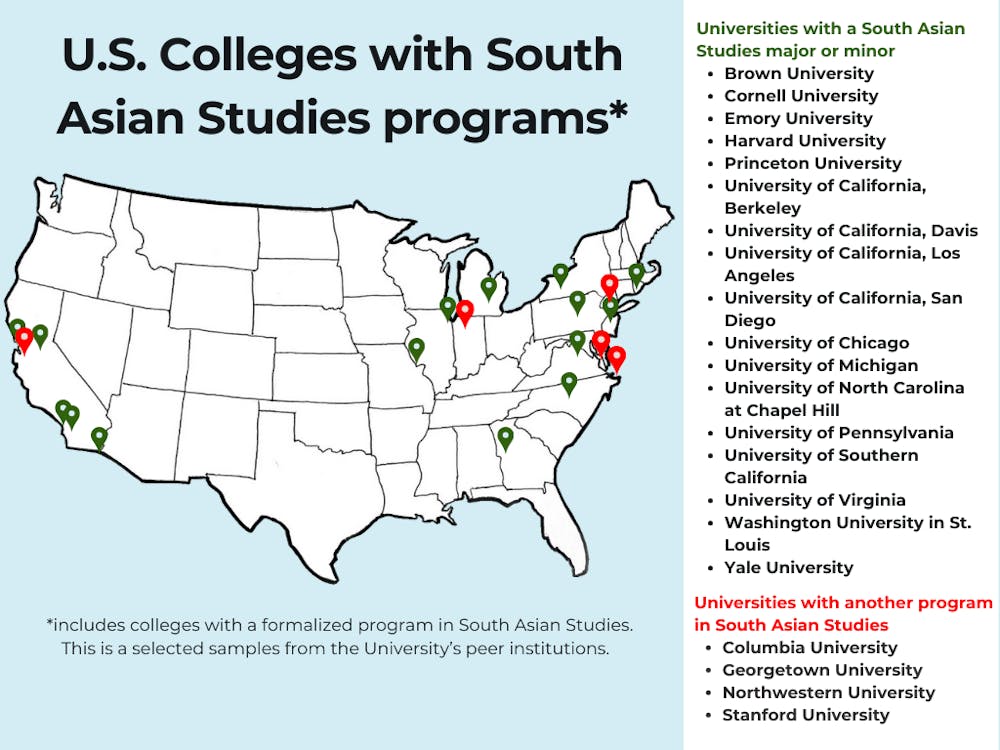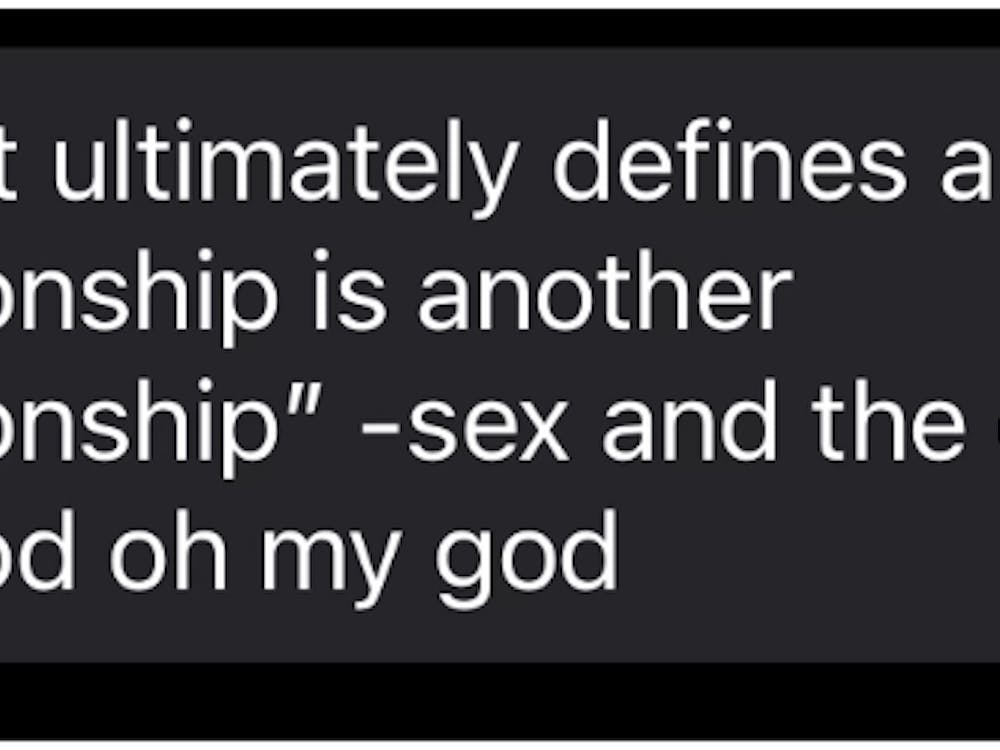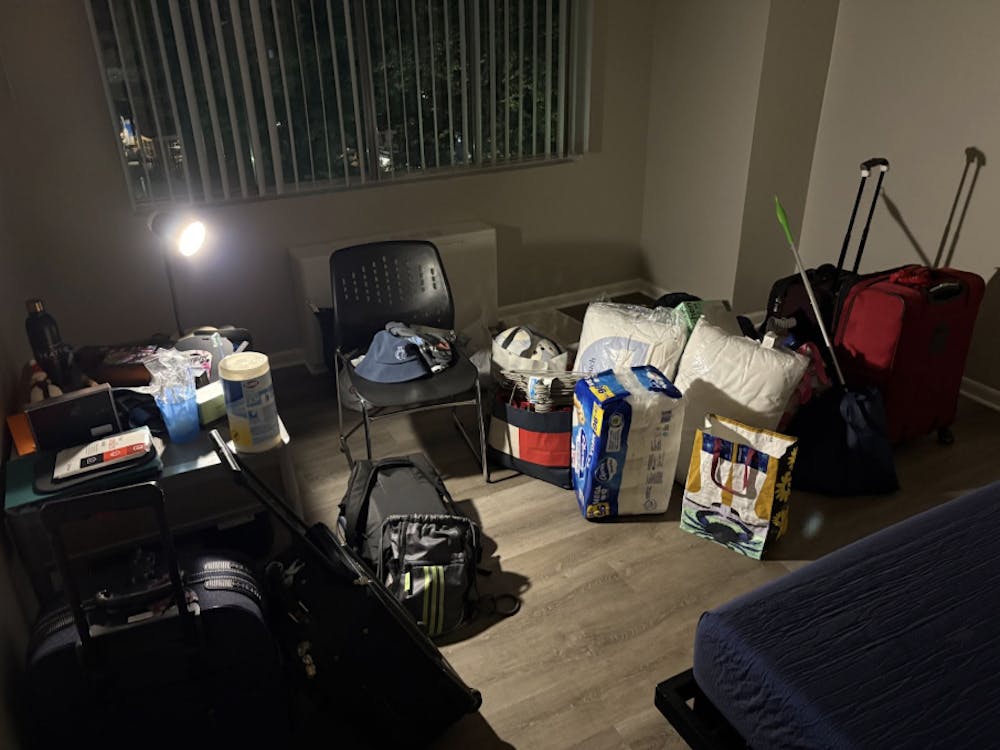Two Class of 2026 senators in the Student Government Association (SGA), Srigouri Oruganty and Shruti Tyagi, are spearheading an initiative to establish a South Asian Studies minor. The minor is expected to consist of 14-20 credits, with core courses in history, geopolitics, sociology and theology. While the minor is currently in the early planning stage, the senators hope this program will provide interdisciplinary and individualized electives.
In an interview with The News-Letter, Oruganty, who is also part of the Krieger School of Arts and Sciences (KSAS) Curriculum Committee, explained that she and Tyagi first came up with the idea last semester after observing a gap in the curriculum. Currently, ethnic studies offered by the University include Africana Studies, East Asian Studies, Islamic Studies, Jewish Studies, Latin American, Caribbean and Latinx Studies, and Near Eastern Studies.
“We do have minors for a lot of different ethnic groups and backgrounds, but it was missing for South Asian Studies, and we felt that we want to patch up that gap in the curriculum — get more representation of South Asians here,” she said.
Tyagi echoed Oruganty’s views in an interview with The News-Letter, as she observed that most similarly ranked institutions offer a South Asian Studies program. She communicated that this new minor is critical in enhancing the diversity of academic programs at Hopkins.
Oruganty also expressed that she drew inspiration from SGA members who have undertaken similar initiatives in recent years. Vice President Jackson Morris has been working on starting a Disabilities Studies minor, and former Vice President Kobi Khong has successfully introduced the Energy minor.
Instead of focusing on specific regions, the minor aims to encompass all of South Asia and represent diverse cultures within the region. In addition to an expansive geographical scope, the minor also aims to be interdisciplinary, bringing together topics such as art, geopolitics, religion, history, public health and climate change. By offering courses from as many vantage points as possible, the senators hope that students can tailor the minor to their interests.
In an email to The News-Letter, sophomore Sami Muhammad, treasurer for the Pakistani Student Association and the JHU Muslim Association, highlighted his desire to see the diverse artistic landscape of South Asia incorporated into the minor, such as literature, poetry and visual art. He also hopes to learn about South Asian philosophy, as he finds that the University lacks focus on Eastern philosophy.
In addition to academic diversity, Tyagi believes the South Asian Studies minor will help foster a sense of belonging for students from a South Asian background.
“A lot of students who come here internationally, or even if they're from the U.S., have a South Asian background or some kind of South Asian connection,” she said. “It would mean a lot for people to see [their background] reflected in the course curriculum and to feel a little more recognized and represented by the school.”
In the email, Muhammad expressed his interest in the minor given his Pakistani and Muslim background.
“As members of the South Asian diaspora, we usually find ourselves sandwiched between two worlds: the external context of a foreign country and the home culture of South Asia,” he wrote. “There is an imbalance, though, in the focus our education takes on where we are raised and not where we come from. A South Asian [Studies] minor allows us to address this gap, to connect with our usually overlooked history as well as our South Asian identity and reclaim those roots.”
Oruganty emphasized that the minor is also valuable for non-South Asian students.
“Having a minor in South Asian Studies can help break down stereotypes and preconceived notions among the student body, reflecting the diversity and the nuances of the different countries in the region,” she said. “It will help in making people a lot more knowledgeable and well-rounded, and to show that the way the media represents South Asia may not be 100% accurate all the time.”
A foundational course that the minor hopes to provide is a general introduction to South Asia, which may be co-taught by 2-3 professors, with the goal of offering diverse insights into South Asian culture. The minor will also incorporate previous courses that have been taught at Hopkins, such as Economics of Health and Education in South Asia, Modern South Asia: Bangladesh/Pakistan and The Occult in South Asia.
The senators have reached out to professors across different fields, including economics, history, anthropology, art and more. Most notably, they have been in touch with Andrew Halladay and Naveeda Khan. Halladay is a lecturer in the Department of the History of Art and has taught courses on film and media in South Asia, while Khan is a professor and department chair of Anthropology and has offered courses on Pakistan and Bangladesh.
Muhammad explained that though Hopkins does offer some classes on South Asia, these are often lack regularity or progression in the flow of classes.
“Allowing for a more centralized and regular course of study will allow students to bring their interest in the subcontinent and truly explore it with a degree of depth and sophistication, unlike what is accessible at the moment,” he wrote.
Oruganty explained that faculty interest is one of the most important parts of starting a minor, as a minor can only exist when you have people to teach the classes. When reaching out, she found faculty members to be supportive of their efforts, with even those lacking the expertise to teach of South Asia providing references or connections to other professors. However, Oruganty and Tyagi also noted challenges they faced, such as the difficulty of finding professors who could commit to the program given their existing responsibilities.
“When it comes to finding professors who are going to teach classes regularly, it's hard to locate faculty who can devote time to the initiative, just because there's a lot that they already have on their plate,” Tyagi said. “It's hard for people to be able to promise, ‘oh yeah, I can teach a class consistently for the next two years,’ which is something that we would be looking for in this minor.”
On a larger scale, Oruganty observed a general lack of South Asianists, a term that refers to scholars who study South Asia, among University faculty.
“Yes, there are definitely faculty that are interested in this region, but I wish that there were a lot more. And I'm kind of shocked that there isn't, because I feel like there's a lot that goes on in this region,” she said. “So that is one of the biggest challenges we face. We are going to need new faculty who are experts in this area.”
The senators are also seeking to collaborate with the Gupta-Klinsky India Institute at Hopkins to explore opportunities for study abroad programs and internships as part of the minor.
In addition to garnering faculty interest, the senators are working to gather student input through an anonymous survey. The survey has received over 100 responses, but Oruganty and Tyagi hope to further publicize the form to collect more feedback, both to learn what students want and to show University administrators the strong demand for the minor.
After gauging interest from faculty and students, the senators will enter the formal process to start a new minor, which begins with sending a proposal to the KSAS curriculum committee and then the Homewood Academic Council. The senators were unsure about the steps following but explained that the proposal would be largely solidified if it passes both rounds.
Tyagi felt that, while it is not impossible for students to get involved and start a minor, the process should be further simplified and streamlined. For this reason, the two senators hope to introduce another initiative to simplify the process of creating a minor; both felt that, in the beginning stages, they did not know what they were supposed to do.
“Just knowing how to [start a minor] involved me contacting a lot of professors, as there's not really a clear-cut instruction of ‘this is what we would need from you.’ So it's definitely a lot of hunting for information on your own and a lot of self-initiative.” Tyagi said. “There are definitely changes that we could advocate for in the future to make it a little more accessible for the average student to start a minor.”
Oruganty and Tyagi added that the two meet weekly on Wednesdays and Fridays, during which students are welcome to join and discuss. They further prompted all students to fill out the survey, regardless of their interest in the minor.





